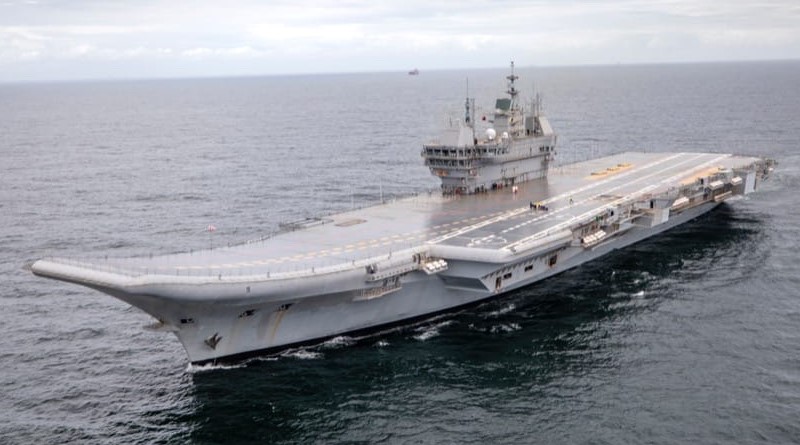Rise of the Indian Navy
As a Mig-29 made a first nighttime landing on the INS Vikrant yesterday, it was a momentous occasion for the team that is involved in the design and build of the indigenous aircraft carrier. It is a significant milestone. It puts India in the elite club of countries that have the ability and resources to build an aircraft carrier. This will allow India to project its military might. Here is the list of the other countries that have the ability to build their own aircraft carriers:
- United States – 20 (11 aircraft carriers, 9 helicopter carriers)
- France – 4 (1 aircraft carrier, 3 helicopter carriers)
- Japan – 4 helo carriers (two of which are being converted to light aircraft carriers)
- China – 3 (2 aircraft carriers, 1 helicopter carrier)
Currently India operates one carrier – INS Vikramaditya. This is a Kiev class carrier that once operated under the name Admiral Gorshkov with the Russian navy. It was purchased by India and upgraded/refitted to meet its needs. Once Vikrant is operational, India will be operating two carrier groups for the first time in her history which will give her much more range, control and coverage to meet external threats.
INS Vikrant in India’s newest and most powerful ship yet. It was inducted in the Navy late last year. It indicates the achievements and potentials of India’s military industry. As great this achievement is for India, we also need to be real. This will not give India any naval superiority over its largest neighbor to the east – China. This carrier needs to be taken as an indigenous ‘practice’ carrier. Lessons learned from this project need to be incorporated into the build of subsequent carriers. This is due to the fact China’s latest carrier is larger (size matters here) and packs a much more lethal punch.
Vikrant certainly is comparable to the first Chinese aircraft carrier – Shandong, however, both use older designs by today’s standards. Both use ski jump-style “short take-off, barrier-arrested recovery” (STOBAR) system to launch aircraft which is now becoming obsolete and are conventionally powered.
INS Vikrant has a history of being plagued with cost overruns and delays. Production began in April 2005 and the keel was laid in April 2009. It was commissioned in September 2022. Took over 13 years to build after the keel was laid. China on the other hand, laid the keel for the Shandong in 2015 and commissioned it in 2019. Clearly Chinese have an edge at managing such a massive project. They intend to have six carrier groups by 2035.
It should be a matter of concern to India as China commissions its next aircraft carrier – Fujian whose construction began in 2015/2016. Fujian is expected to have a displacement of upwards of 80,000 tons. It is will have the CATOBAR (“Catapult Assisted Take-Off But Arrested Recovery” or “Catapult Assisted Take-Off Barrier Arrested Recovery”) system and electromagnetic catapults. This basically means it can launch aircraft much faster and will have the ability to launch heavier transport aircraft.
In order to stay on-par with China, India will need to ensure she puts all the lessons learned from INS Vikrant into practice. Not only will the Indians need to keep up with the technology but change their processes to drastically reduce timelines for building an aircraft carrier. In addition, perhaps it is time to start thinking of a nuclear powered aircraft carrier as Fujian with all its technology is still a conventionally powered ship.




